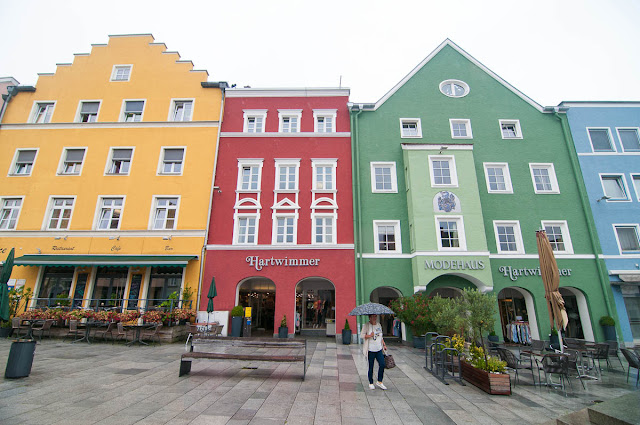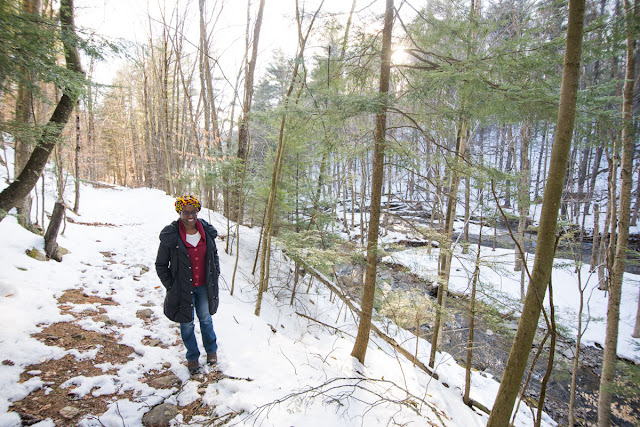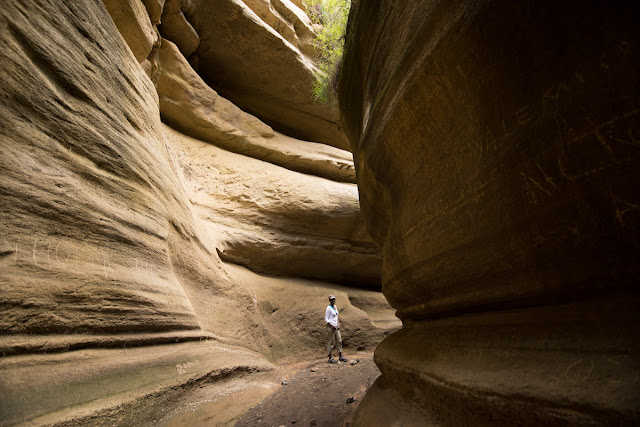Czechia: They Invented Pilsner: Need we say More?
With a frisson of excitement we jumped on a train to our next destination: The Czech Republic! Actually it was more than a frisson. I have always wanted to visit Prague. I can't even explain why. Maybe something about visiting a culture that has always straddled West and East Europe, is steeped in its own unique history and contributes more than its fair share of intellectuals and rather excellent footballers. Or, it could be because they invented pilsner.
First, of course, we had to get there. So we hopped on the fabulous European train network, steamed through picturesque Austria, past cattle grazing in incomprehensibly pretty pastures, and soon passed through to the Czech countryside. Needless to say, the cattle looked the same, but at our first train station there was a decided change in architecture.
The Czech republic have a long history dating back to the 9th century, and they have been invaded and ruled by many different powers. Somehow they manage to keep their culture and identity alive, but of course, each ruling power influences some aspect. Soviet rule from 1968 to 1989 left them with 2 notable things: an incredible public transport system, and some incredibly boring buildings.
But no need to panic! Before Soviet rule, there were lots of beautiful buildings that are still standing. So now we have a rather ideal combination of beautiful buildings and efficient transport. Our first stop was Prague castle: The largest ancient castle in the world, dating from the 9th Century and STILL in use. This was in evidence as the day we visited there was heightened security and a huge convey of German luxury cars zipped past us conveying the German Chancellor to a meeting with the Czech president.
Some of these buildings were seemingly random buildings strewn on the grounds. The massive hall that Sandi is standing in front of had huge nautical-themed paintings on the walls, but the door was locked and there was no explanation of the the purpose of the building. Likewise the one with the manicured garden out front.
By and by we came to the central complex of the castle, which consists of several buildings including the St. Vitus Cathedral. Under Charles the IV (we shall meet him again shortly), this cathedral began construction in 1344. Interestingly, there was another church on the same place that dated from the 10th Century, that was founded by the Duke of Bohemia, Wenceslaus I. He chose this name because he had acquired the arm of St Vitus (supposedly a holy relic), but on a more practical level, in Czech, the name sounded very much like the name of Slavic solar deity Svantevit.
The building itself is gargantuan. The tallest tower is 102m (337ft). Much of it was built by a man named Peter Parler (not to be confused with Peter Parker, even though one of his distinguishing themes was the 'net-vaults' that you can see in the domes in the picture above.)
You can see how big the place is by looking at the people milling about. There was a fair number of people there, but they were lost in the huge space.
The streets of Prague are just wonderful for aimless rambling. Each corner brings an unexpected beautiful old building, or cute little shop, or some other treasure. Each part of the city has its own flavor.
The subway station is a particular treat. I don't even know how to describe this style, but I do know that I like it.
As we wandered around without a map or anything to guide us, we stumbled into this perfectly manicured handsome garden that was completely empty. No guards, tourist or any other sign of life. Wide open inviting gate and not a soul in sight. The garden was spectacular.
We are still not sure what the building was. But it sure was lovely. I have to mention that Prague is a fairly popular destination and there was no shortage of tourists. If you come here you must find the place. But I have no idea where it actually is so you will have to hope you serendipitously bumble into it as we did.
The streets of Prague are littered with pretty buildings like the one above. Many have restaurants or shops, run by friendly owners or staff. Many went out of their way to be nice to us, which is exceptional in a European country that gets a lot of tourists.
This sculpture of Franz Kafka celebrates one of the Czech Republic's famous sons. He was a German-speaking Jew who wrote stories that often featured characters stuck in nightmarish situations overpowered by bureaucracy and with no clear way out (I haven't read him myself, so that is according to other sources). Hence the English word 'Kafkaesque' to describe similar situations. The sculpture is pretty mesmerizing because it is motorized and the slices keep on moving until eventually the whole head is facing a different direction.
This building stands out among a block of handsome and staid old 18th century buildings - it is nicknamed 'the Dancing House' and is meant to represent Fred Astaire dancing with Ginger Rogers. I love it, but Sandi hates it, saying it spoils the neighborhood. Not to draw you into our domestic battles, but what do YOU think?
This is Pragues famous astronomical clock. It is the oldest operating astronomical clock in the world, having been first installed in 1410. According to legend, it was built by a man called Hanus, who was blinded afterwards so he would not repeat his work. In revenge he damaged the clock, and no one was able to fix it for the next hundred years. It would seem that this is not actually true. What is true is that it's a pretty nifty clock showing among other things a 24 clock and phases of the moon, movement of the sun and the moon and the date. Oh and several little figures that pop out every hour for a little show.
One last famous Czech to end this post: John Hus. Inspired by John Wylcyffe, he believed that religious teaching should be in the language of local people and not Latin. He was burned at the stake in 1415 and ultimately led to the Hussite wars. He dared to oppose the might of the Papal Roman Empire. Its worth taking the time to read about him in the article 'He Obeyed God as Ruler Rather Than Men.'
First, of course, we had to get there. So we hopped on the fabulous European train network, steamed through picturesque Austria, past cattle grazing in incomprehensibly pretty pastures, and soon passed through to the Czech countryside. Needless to say, the cattle looked the same, but at our first train station there was a decided change in architecture.
The Czech republic have a long history dating back to the 9th century, and they have been invaded and ruled by many different powers. Somehow they manage to keep their culture and identity alive, but of course, each ruling power influences some aspect. Soviet rule from 1968 to 1989 left them with 2 notable things: an incredible public transport system, and some incredibly boring buildings.
But no need to panic! Before Soviet rule, there were lots of beautiful buildings that are still standing. So now we have a rather ideal combination of beautiful buildings and efficient transport. Our first stop was Prague castle: The largest ancient castle in the world, dating from the 9th Century and STILL in use. This was in evidence as the day we visited there was heightened security and a huge convey of German luxury cars zipped past us conveying the German Chancellor to a meeting with the Czech president.
Some of these buildings were seemingly random buildings strewn on the grounds. The massive hall that Sandi is standing in front of had huge nautical-themed paintings on the walls, but the door was locked and there was no explanation of the the purpose of the building. Likewise the one with the manicured garden out front.
By and by we came to the central complex of the castle, which consists of several buildings including the St. Vitus Cathedral. Under Charles the IV (we shall meet him again shortly), this cathedral began construction in 1344. Interestingly, there was another church on the same place that dated from the 10th Century, that was founded by the Duke of Bohemia, Wenceslaus I. He chose this name because he had acquired the arm of St Vitus (supposedly a holy relic), but on a more practical level, in Czech, the name sounded very much like the name of Slavic solar deity Svantevit.
The building itself is gargantuan. The tallest tower is 102m (337ft). Much of it was built by a man named Peter Parler (not to be confused with Peter Parker, even though one of his distinguishing themes was the 'net-vaults' that you can see in the domes in the picture above.)
You can see how big the place is by looking at the people milling about. There was a fair number of people there, but they were lost in the huge space.
The streets of Prague are just wonderful for aimless rambling. Each corner brings an unexpected beautiful old building, or cute little shop, or some other treasure. Each part of the city has its own flavor.
As we wandered around without a map or anything to guide us, we stumbled into this perfectly manicured handsome garden that was completely empty. No guards, tourist or any other sign of life. Wide open inviting gate and not a soul in sight. The garden was spectacular.
We are still not sure what the building was. But it sure was lovely. I have to mention that Prague is a fairly popular destination and there was no shortage of tourists. If you come here you must find the place. But I have no idea where it actually is so you will have to hope you serendipitously bumble into it as we did.
The streets of Prague are littered with pretty buildings like the one above. Many have restaurants or shops, run by friendly owners or staff. Many went out of their way to be nice to us, which is exceptional in a European country that gets a lot of tourists.
This sculpture of Franz Kafka celebrates one of the Czech Republic's famous sons. He was a German-speaking Jew who wrote stories that often featured characters stuck in nightmarish situations overpowered by bureaucracy and with no clear way out (I haven't read him myself, so that is according to other sources). Hence the English word 'Kafkaesque' to describe similar situations. The sculpture is pretty mesmerizing because it is motorized and the slices keep on moving until eventually the whole head is facing a different direction.
This building stands out among a block of handsome and staid old 18th century buildings - it is nicknamed 'the Dancing House' and is meant to represent Fred Astaire dancing with Ginger Rogers. I love it, but Sandi hates it, saying it spoils the neighborhood. Not to draw you into our domestic battles, but what do YOU think?
This is Pragues famous astronomical clock. It is the oldest operating astronomical clock in the world, having been first installed in 1410. According to legend, it was built by a man called Hanus, who was blinded afterwards so he would not repeat his work. In revenge he damaged the clock, and no one was able to fix it for the next hundred years. It would seem that this is not actually true. What is true is that it's a pretty nifty clock showing among other things a 24 clock and phases of the moon, movement of the sun and the moon and the date. Oh and several little figures that pop out every hour for a little show.
One last famous Czech to end this post: John Hus. Inspired by John Wylcyffe, he believed that religious teaching should be in the language of local people and not Latin. He was burned at the stake in 1415 and ultimately led to the Hussite wars. He dared to oppose the might of the Papal Roman Empire. Its worth taking the time to read about him in the article 'He Obeyed God as Ruler Rather Than Men.'



















